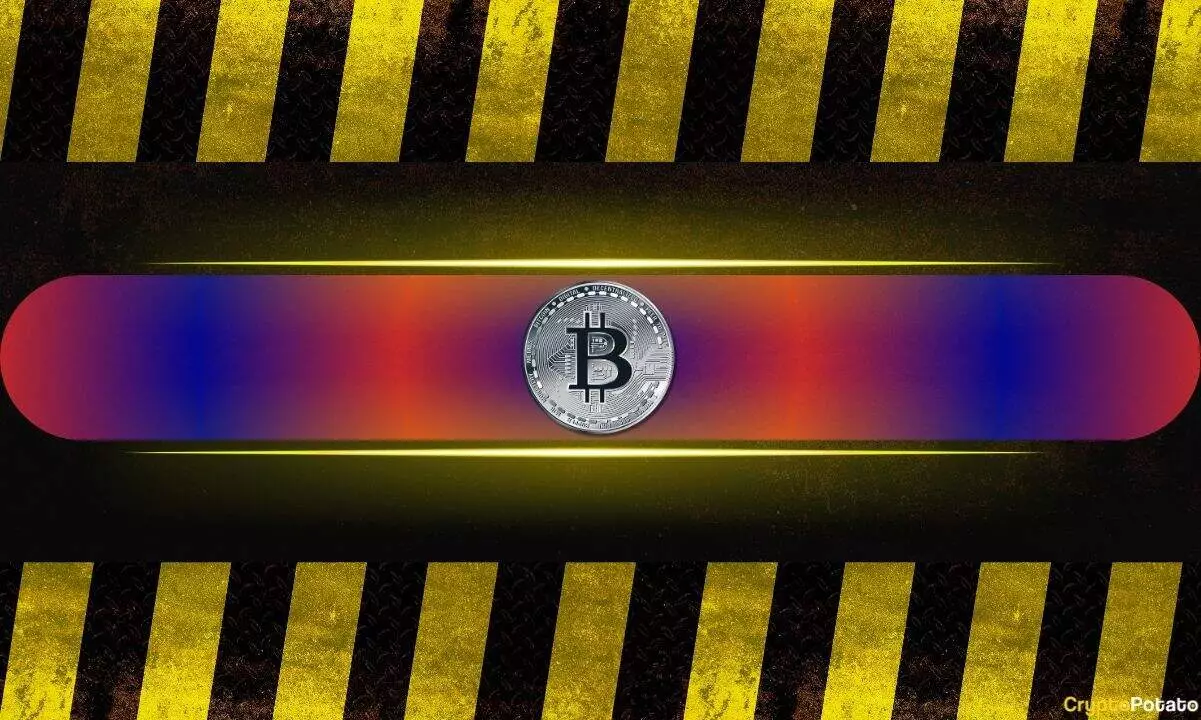Bitcoin’s recent rally, which propelled the pioneering cryptocurrency into new price heights, may appear as a sign of resilience and maturing market confidence. Yet, beneath this veneer lies a fragile foundation. The notion that Bitcoin’s “structural strength remains intact,” as some analysts claim, fails to address an impending vulnerability—the euphoria of profits and the impending rotation of investor cohorts. While the coin has successfully navigated a week of consolidation, the underlying dynamics suggest we are closer to a critical tipping point than the surface reveals. The narrative of strength is increasingly overshadowed by an emerging sense of market fatigue, heightened volatility, and the risk of a sharp downturn if demand falters.
Profit-Taking and the Rotation of Capital: A Trust Fall in the Making
For seasoned investors, the recent shift of long-term holders to profit-taking signals not just an organic cycle, but a potential warning sign of overheating. These investors, who for months have remained steadfast, are now locking in gains, sending Bitcoin to exchanges—an act that temporarily increases the supply and could dampen upward momentum. This process is not inherently alarming; it is part of a natural market cycle. However, the real concern stems from the fact that this rotation often presages a broader cooling phase, especially if fresh demand does not step in to absorb the increased supply.
What complicates the picture further is the seemingly paradoxical influx of institutional players—ETFs, treasury reserves, and savvy traders—who are snapping up BTC despite the technical indicators signaling overbought conditions. This influx suggests a belief that Bitcoin remains fundamentally strong, but such a stance skirts the risk that these acquisitions may be merely speculative, driven by broader market euphoria rather than genuine long-term conviction. Moreover, the rising profit margins in spot holdings stimulate short-term selling, potentially igniting a correction that could spiral into a broader decline if investor confidence shrinks.
The Illusion of Durability Amidst Rising Volatility
The psychological impact of market dynamics becomes especially pronounced when a substantial portion of supply is sitting in profit. With over 95% of Bitcoin’s on-chain supply now in the black, the stage is set for an aggressive profit-taking spree among short-term traders. History suggests that such conditions often precede sudden, aggressive price drops—not necessarily because of external shocks, but due to internal profit distributions and a waning of bullish fervor.
Despite claims of structural integrity, the current environment hints at an alternative narrative: that Bitcoin’s market health is heavily dependent on fleeting demand and momentum. The risk of a sharp retracement lurks just beneath the surface, especially if the fickle nature of retail and institutional demand falters. This sustained volatility—an inevitable byproduct of a market stretching to new highs without solidified support—could catalyze a correction that leaves many investors exposed, especially those who entered during the recent speculative surge.
Altcoins Thrive on Bitcoin’s Weakness, Signaling a Shift in Sentiment
In the shadow of Bitcoin’s cooling off, the crypto space is witnessing what some analysts call an “aggressive catch-up rally” among altcoins. This movement is not merely a sign of diversification or strategic reallocation; it signals growing skepticism about Bitcoin’s sustainability at current levels. Investors are, perhaps counterintuitively, betting on altcoins’ resilience and higher short-term gains. Leading the charge are Ethereum (ETH) and Solana (SOL), whose recent outperformance indicates a shift in capital away from Bitcoin’s dominance to the broader decentralized landscape.
The surge of the Others Index—a measure excluding top-tier assets—by over 35% in two weeks underscores the emergence of alternative narratives. The decline in Bitcoin’s market share by nearly 7% confirms that confidence in BTC’s ability to deliver sustained growth is waning. Instead, traders are increasingly pursuing higher-risk, higher-reward assets, fully aware that the current landscape is driven by speculative fervor and liquidity chasing.
A Warning Sign of an Imminent Downtrend?
This rotation and the rapid rally of altcoins might seem to indicate market vitality, but closer inspection reveals a dangerous overextension. Without robust spot demand—fresh buy-ins at current or higher prices—the rally risks becoming a bubble ready to burst. The increasing volatility, coupled with potential profit-taking on a macro scale, suggests that the market could swiftly turn against the optimistic narratives.
In this context, the crypto market resembles a house of cards teetering on the edge: the infrastructure remains, but the foundation—namely, genuine, sustained demand—is fragile. If the momentum shifts, and the buying frenzy diminishes, Bitcoin and its alternative counterparts could be caught in a sudden correction. Such a scenario would underscore the importance of cautious optimism—recognizing the potential for gains, but remaining acutely aware of the inherent risks embedded within the current market structure.


Leave a Reply